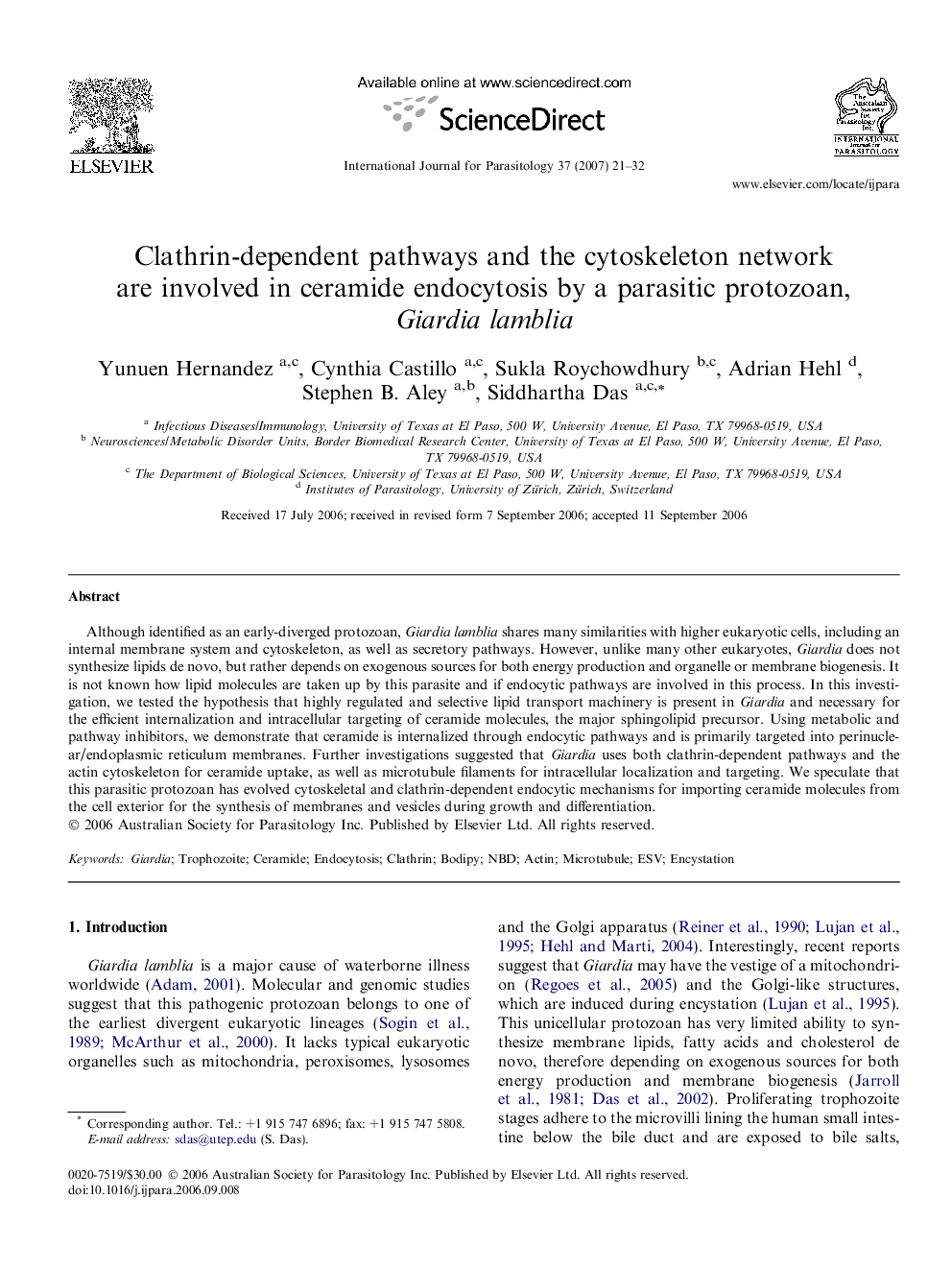| Article ID | Journal | Published Year | Pages | File Type |
|---|---|---|---|---|
| 2436838 | International Journal for Parasitology | 2007 | 12 Pages |
Abstract
Although identified as an early-diverged protozoan, Giardia lamblia shares many similarities with higher eukaryotic cells, including an internal membrane system and cytoskeleton, as well as secretory pathways. However, unlike many other eukaryotes, Giardia does not synthesize lipids de novo, but rather depends on exogenous sources for both energy production and organelle or membrane biogenesis. It is not known how lipid molecules are taken up by this parasite and if endocytic pathways are involved in this process. In this investigation, we tested the hypothesis that highly regulated and selective lipid transport machinery is present in Giardia and necessary for the efficient internalization and intracellular targeting of ceramide molecules, the major sphingolipid precursor. Using metabolic and pathway inhibitors, we demonstrate that ceramide is internalized through endocytic pathways and is primarily targeted into perinuclear/endoplasmic reticulum membranes. Further investigations suggested that Giardia uses both clathrin-dependent pathways and the actin cytoskeleton for ceramide uptake, as well as microtubule filaments for intracellular localization and targeting. We speculate that this parasitic protozoan has evolved cytoskeletal and clathrin-dependent endocytic mechanisms for importing ceramide molecules from the cell exterior for the synthesis of membranes and vesicles during growth and differentiation.
Related Topics
Life Sciences
Immunology and Microbiology
Parasitology
Authors
Yunuen Hernandez, Cynthia Castillo, Sukla Roychowdhury, Adrian Hehl, Stephen B. Aley, Siddhartha Das,
